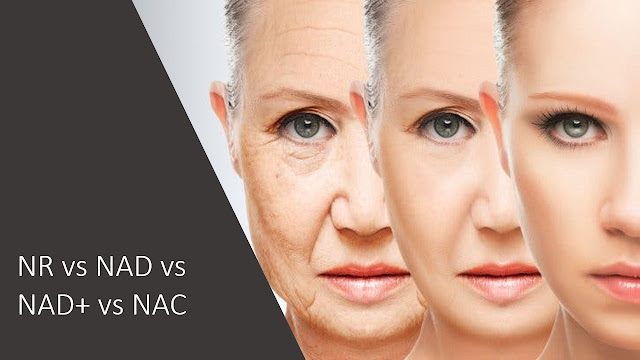Immunotherapy and Hyperthermia for Cancer (2024)
Cancer remains a significant global health concern, claiming almost 10 million lives in 2020, equating to nearly one in six deaths worldwide. The most prevalent cancer types include breast, lung, colon, rectum, and prostate cancers, which collectively contribute to a substantial burden on healthcare systems and families around the world.
Traditional cancer treatments primarily involve surgery, radiation therapy, and chemotherapy. While these approaches have shown effectiveness in many cases, some patients may require a more comprehensive strategy to combat the disease. This has led to the emergence of innovative treatment options, such as combining radiation therapy with hyperthermia or immunotherapy.
Traditional cancer treatments primarily involve surgery, radiation therapy, and chemotherapy. While these approaches have shown effectiveness in many cases, some patients may require a more comprehensive strategy to combat the disease. This has led to the emergence of innovative treatment options, such as combining radiation therapy with hyperthermia or immunotherapy.
Contents
What is Hyperthemia?
• Hyperthermia Therapy for Cancer
• Hyperthermia in Combined Treatment of Cancer
What is Immunotherapy?
• Immunotherapy in Combined Treatment of Cancer
FAQs
What is Hyperthermia?
Hyperthermia is an abnormally high body temperature because your body can no longer release enough of its heat to maintain a normal temperature. It’s the opposite of hypothermia, when your body is too cold.Hyperthermia vs Fever
Hyperthermia isn’t the same as a fever. Hyperthermia is an uncontrolled rise in body temperature due to thermoregulation failure. Thermoregulation is a process that allows your body to maintain its core internal temperature.
A fever, on the other hand, is a temporary increase in your body temperature. Your hypothalamus increases your body’s set-point temperature often because your body’s attempt to fight off an infection.
Hyperthermia Therapy for Cancer

Thermal Therapy – photo from semanticscholar.org
Heat therapy for cancer
High body temperature is often caused by illness, such as fever or heat stroke. Research has shown that elevated body temperature can damage and kill cancerous cells with minimal injury to normal cells (Source). The main mechanism involved is by killing the cancer cells by destructing proteins and the structure within cells. Thus, hyperthermia may shrink tumors (Source).
In addition, hyperthermia to treat cancer is also called thermal therapy, thermal ablation, or thermotherapy.
This application of heat also help enhance the efficiency of standard cancer therapies, such as chemotherapy and radiation treatment.
Hyperthermia in combined treatment of cancer:
a. Combination of Hyperthermia and Radiotherapy
Hyperthermia treatment is a non-invasive method of increasing tumor temperature to stimulate blood flow, increase oxygenation and render tumor cells more sensitive to radiation. By adding hyperthermia to radiation therapy, radiation oncologists can increase tumor control while minimizing damage to healthy tissue.Hyperthermia helps address the limitations of radiation for many patients by effectively increasing the radiation dose without increasing in unwanted side effects. (Source)
Hyperthermia and Radiotherapy in Metastatic Melanoma
A major multicenter trial was carried out in Europe by ESHO in patients with metastatic melanoma showed that here was a significant benefit for the addition of Hyperthermia, with a 2-year local control of 46% in the combined group as compared with 28% for those receiving Radiation alone. (Source)
b. Combination of Hyperthermia and Chemotherapy
Hyperthermia drug sensitization can be found in several anti-cancer drugs, mainly in alkylating agents. Those cells which are already resistant to the drugs, can respond to the same drug with combination therapy (i.e. heat).Hyperthermia, with enhanced tissue perfusion, facilitates the absorption of chemotherapeutic API through cell membrane. In the presence of heat, chemical reaction gets accelerated. Therefore, chemotherapy becomes more effective, and less toxic. (Source)
What is Immunotherapy?
Immunotherapy uses our immune system to fight cancer. It works by helping the immune system recognise and attack cancer cells.You might have immunotherapy on its own or with other cancer treatments. Immunotherapy is a standard treatment for some types of cancer. And it is in trials for other types of cancer.
There are different types of immunotherapy. These include monoclonal antibodies, checkpoint inhibitors, and vaccines. Some types of immunotherapy are also called targeted treatments or biological therapies. (Source)
Immunotherapy cancer success rate
Immunotherapy drugs work better in some cancers than others and while they can be a miracle for some, they fail to work for all patients. Overall response rates are about 15 to 20%. (Source)
Immunotherapy in Combined Treatment of Cancer
a. Combination of Immunotherapy and Radiotherapy
Radiation seems to synergize with immunotherapy via several mechanisms, such as increasing the visibility of tumor antigens, activating the cGAS-STING pathway, and modulating the tumor microenvironment. (Source)Radiotherapy and Immunotherapy in Lung Cancer
A study shows a summary of ongoing randomized studies combining immunotherapies and radiotherapy in lung cancer. According to current clinical trial data, radiotherapy combined with immunotherapy can significantly improve the survival of lung cancer patients without significantly increasing adverse reactions
b. Combination of Immunotherapy and Targeted Therapies
An improved understanding of cancer pathogenesis has given rise to new treatment options, including targeted agents and cancer immunotherapy. Targeted approaches aim to inhibit molecular pathways that are critical to tumor growth and maintenance, whereas immunotherapy endeavors to stimulate a host response that effectuates long-lived tumor destruction. (Source)Immunotherapy and Targeted Therapy in Metastatic Melanoma
Although the response duration of immunotherapy is optimal, the rate of response is low in patients with metastatic melanoma because of the initiation of immune evasion. Therefore, combining targeted therapy with immunotherapy, especially immune checkpoint blockade, is a scientific and prominent strategy in effort to maximize therapeutic benefits and minimize toxicity. (Source)
c. Combination of Immunotherapy and Hyperthermia
In this 2022 review, the authors extensively summarize the knowledge and progress of HIT (Hyperthermia combined with Immune Checkpoint Inhibitors) for analysis and discusses the effect and feasibility. The authors concluded:
Several HIT (Hyperthermia combined with Immune Checkpoint Inhibitors) sensitization mechanisms have not only been observed and explained in numerous basic experiments but have also been reflected and demonstrated as significant survival benefits for patients through pioneering clinical trials.
FAQs
a. Who is a candidate for immunotherapy?
The type and stage of your cancer, the biomarkers that your cancer expresses, and whether current cancer treatment guidelines and data support immunotherapy for certain conditions all play a role in determining if you are a candidate for immunotherapy.If genetic testing reveals biomarkers for PD-L1 expression, high microsatellite instability, or a high tumor mutational burden, you may be a candidate for immunotherapy.
b. Immunotherapy side effects
Immunotherapy side effects vary based on the type of treatment used, as well as the location and type of cancer being treated, as well as the patient’s overall condition.
In general, the following are some common side effects of immunotherapy: arthritis, chills, constipation, coughing, decreased appetite, diarrhea, fatigue, fever and flu-like symptoms, headache, hypopituitarism, hypothyroidism, infusion-related reaction / injection site pain, itching, muscle aches, nausea, rash, vomiting.
However, you need to seek your oncologist for further explanation because certain types of immunotherapies may give you other side effects.
Because localized and whole-body hyperthermia are frequently used in combination with other cancer therapies including chemotherapy and radiation, adverse effects from these treatments may appear immediately or later.
In general, the following are some common side effects of immunotherapy: arthritis, chills, constipation, coughing, decreased appetite, diarrhea, fatigue, fever and flu-like symptoms, headache, hypopituitarism, hypothyroidism, infusion-related reaction / injection site pain, itching, muscle aches, nausea, rash, vomiting.
However, you need to seek your oncologist for further explanation because certain types of immunotherapies may give you other side effects.
c. Hyperthermia side effects
Side effects depend on what part of the body is treated and how high the temperature is raised. Whole-body and regional hyperthermia can cause nausea, vomiting, and diarrhoea. More serious, though rare, side effects can include problems with the heart, blood vessels, and other major organs. (Source)Because localized and whole-body hyperthermia are frequently used in combination with other cancer therapies including chemotherapy and radiation, adverse effects from these treatments may appear immediately or later.
Hyperthermia therapy is fairly new, so it isn’t a standard cancer treatment throughout the world. If you have cancer, talk to your healthcare provider about hyperthermia therapy to find out if it could be a treatment option for you.




.png)



Comments